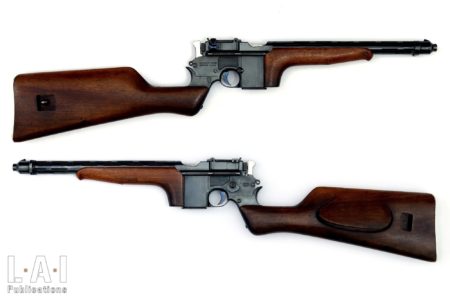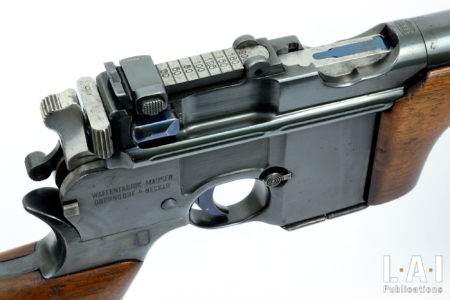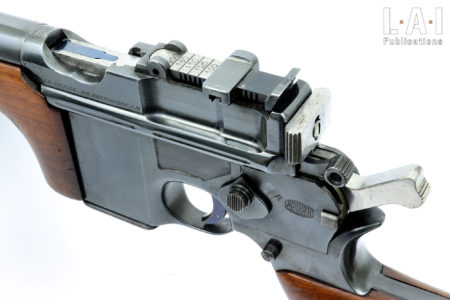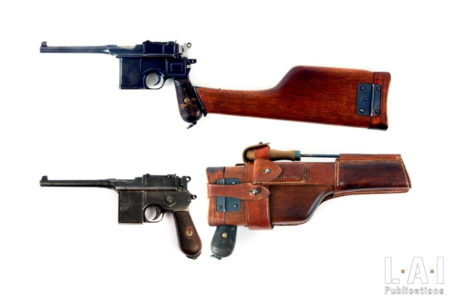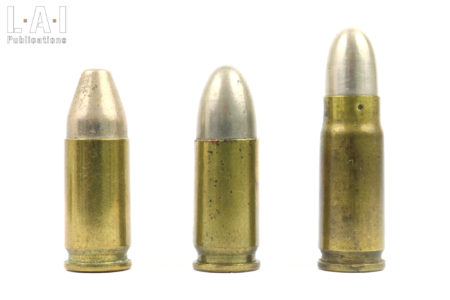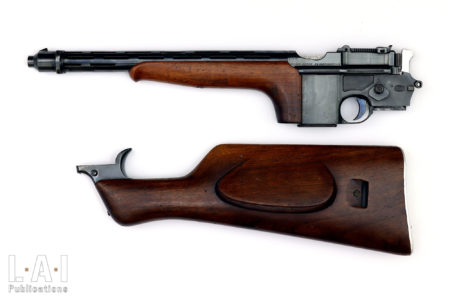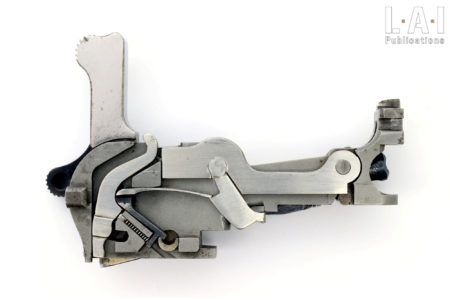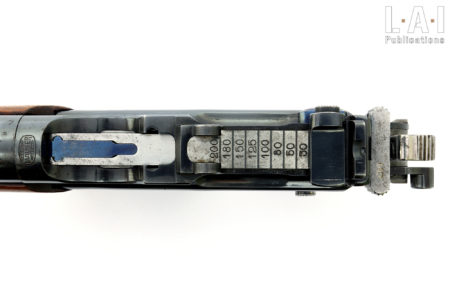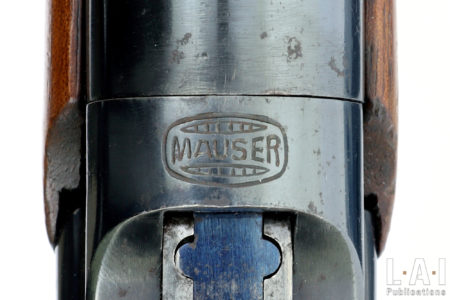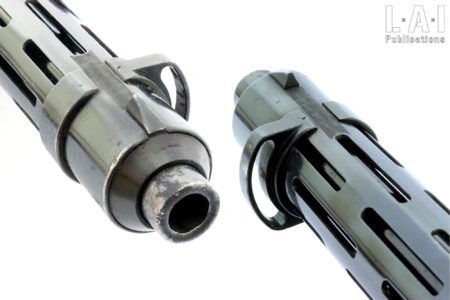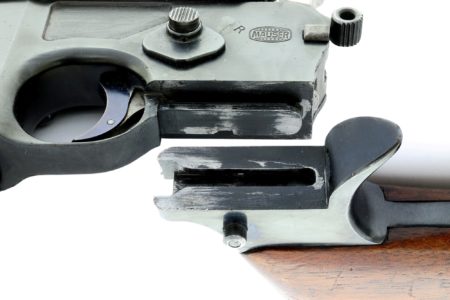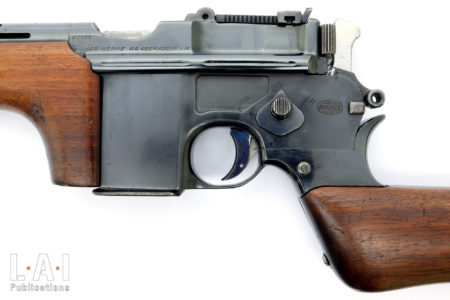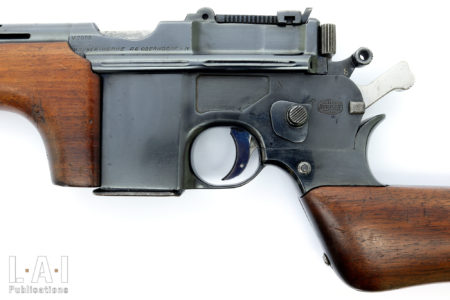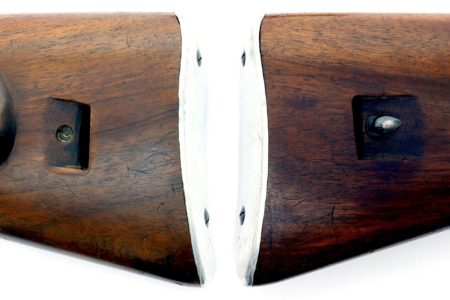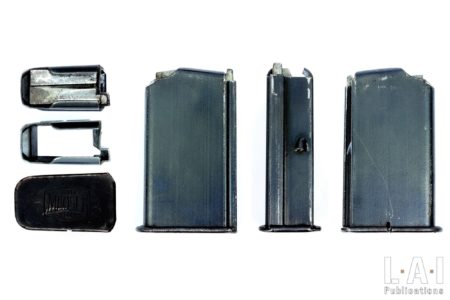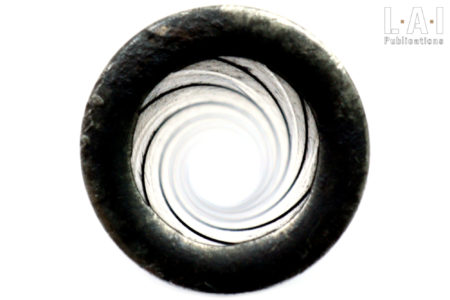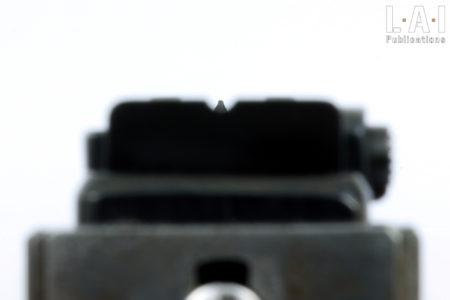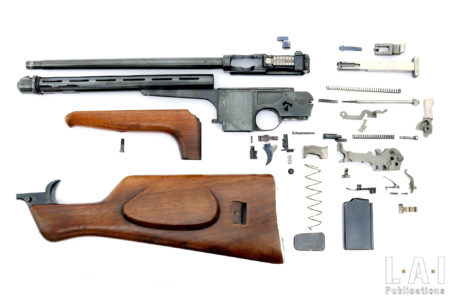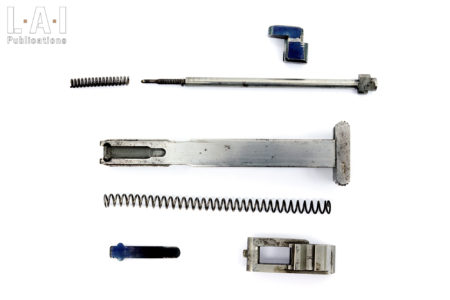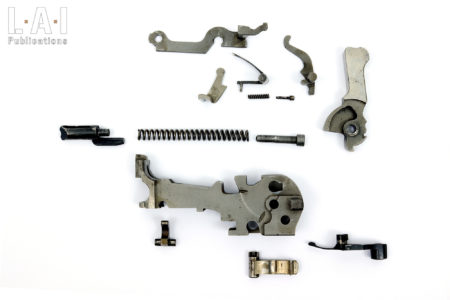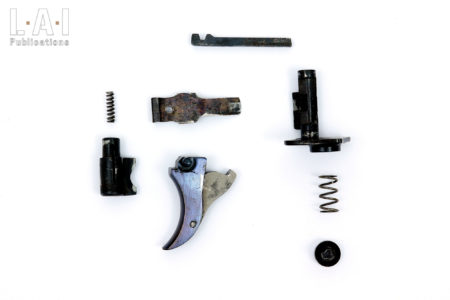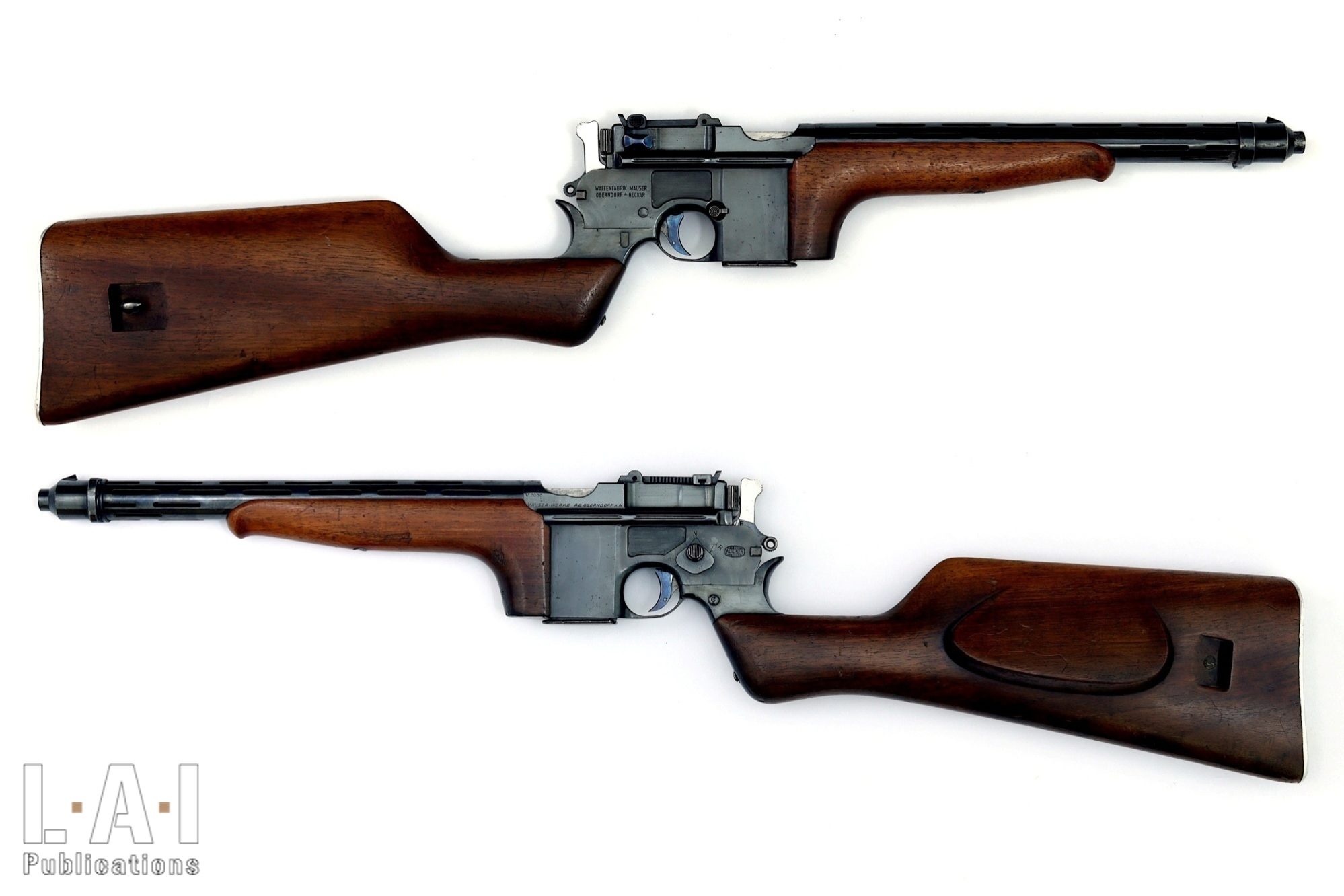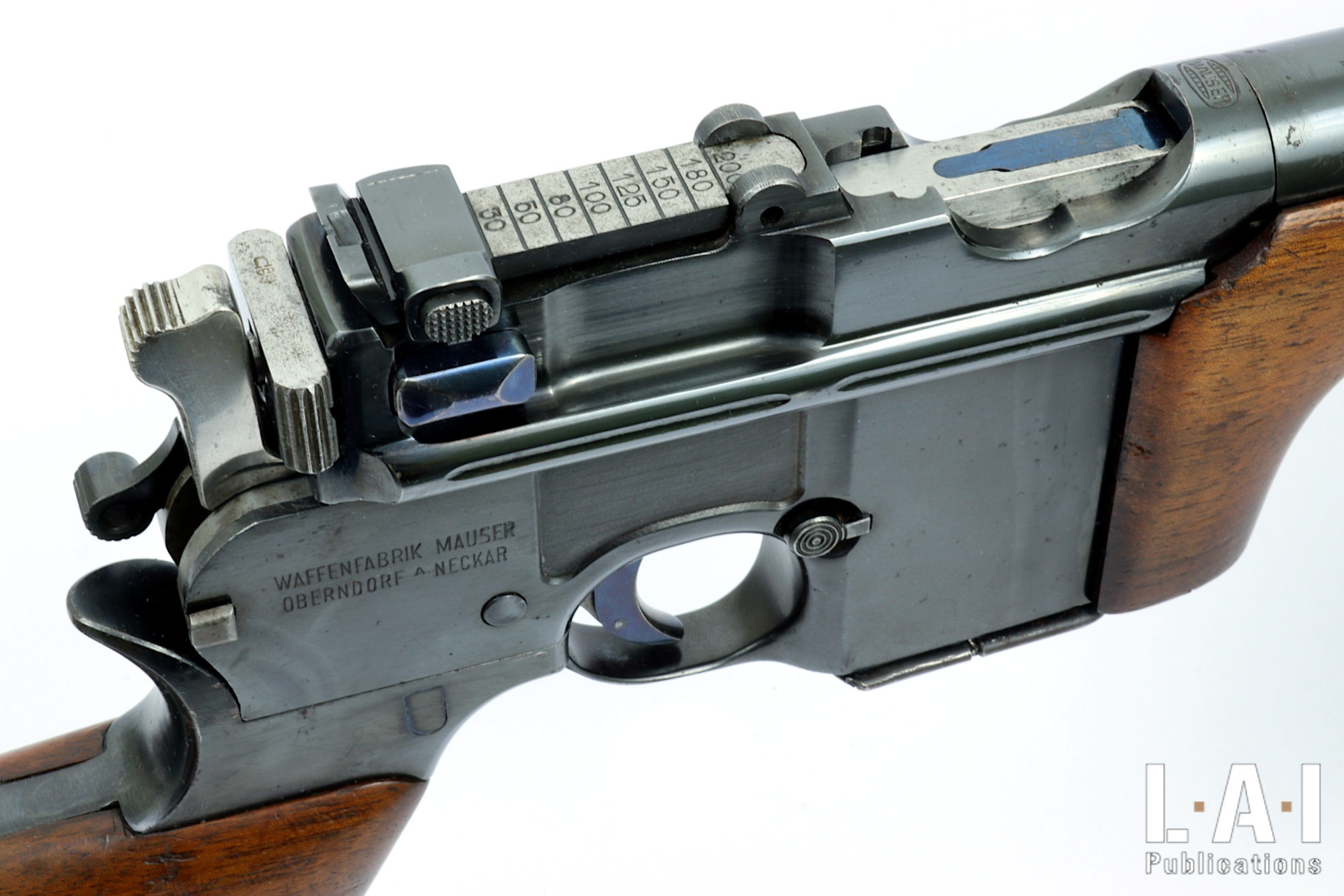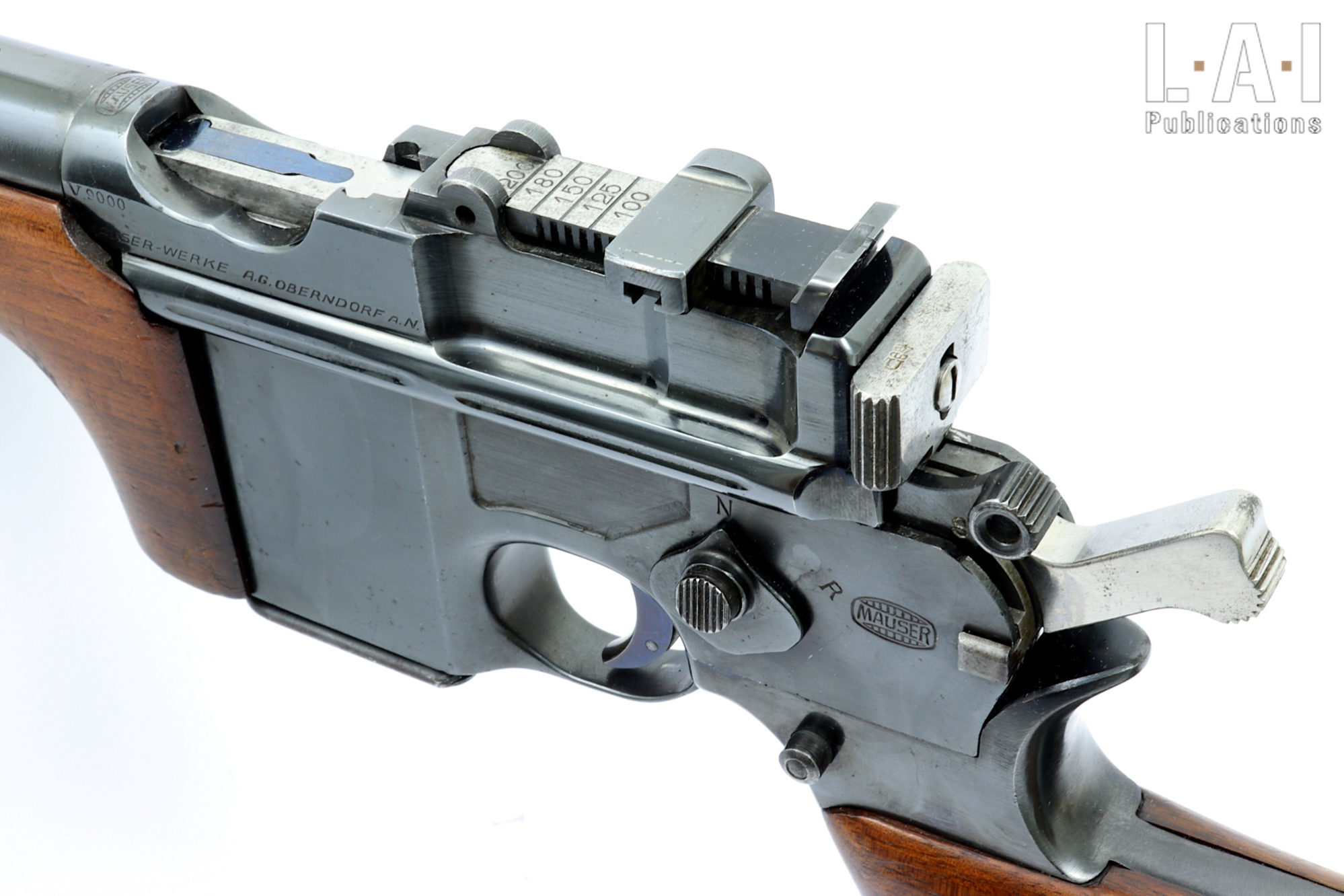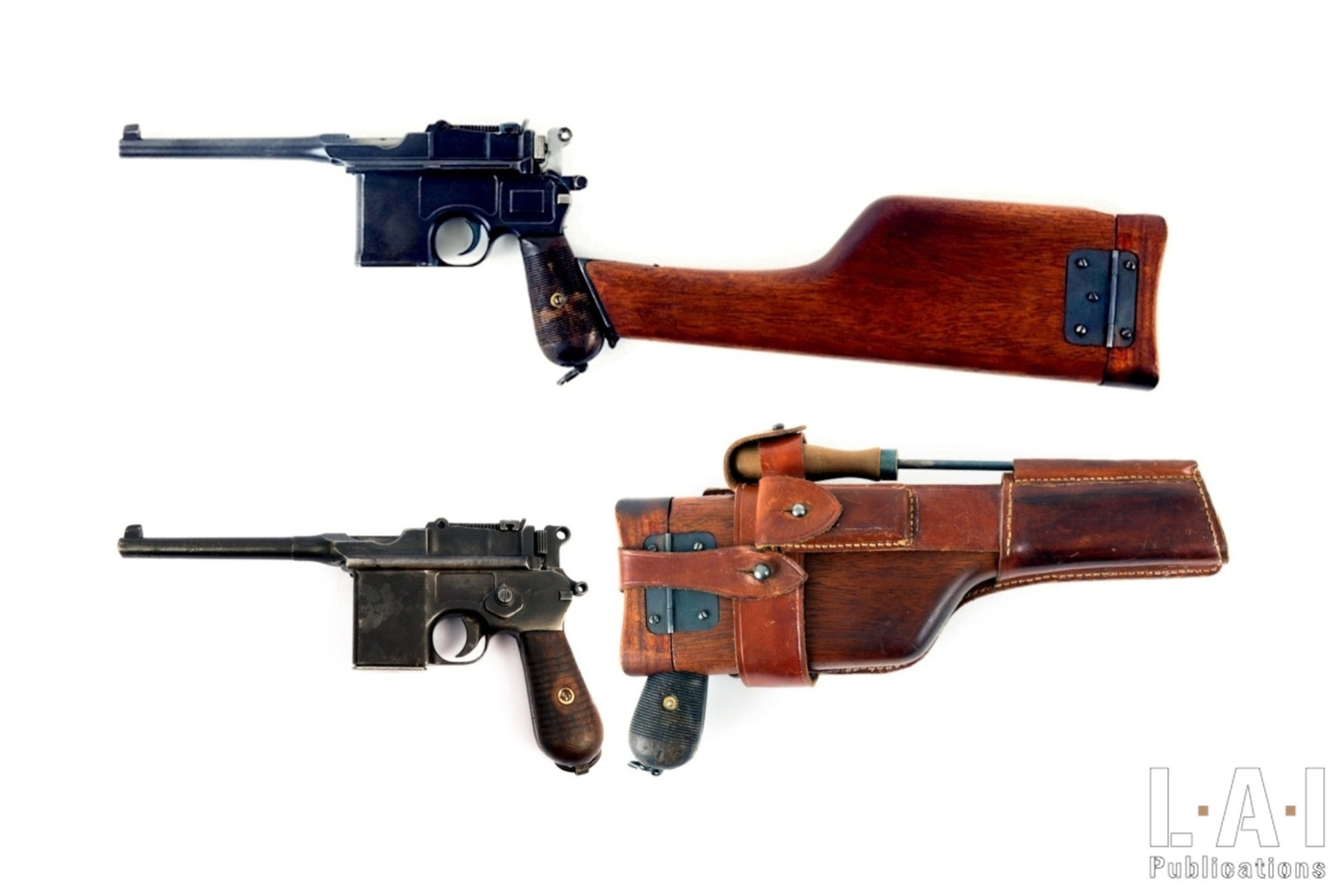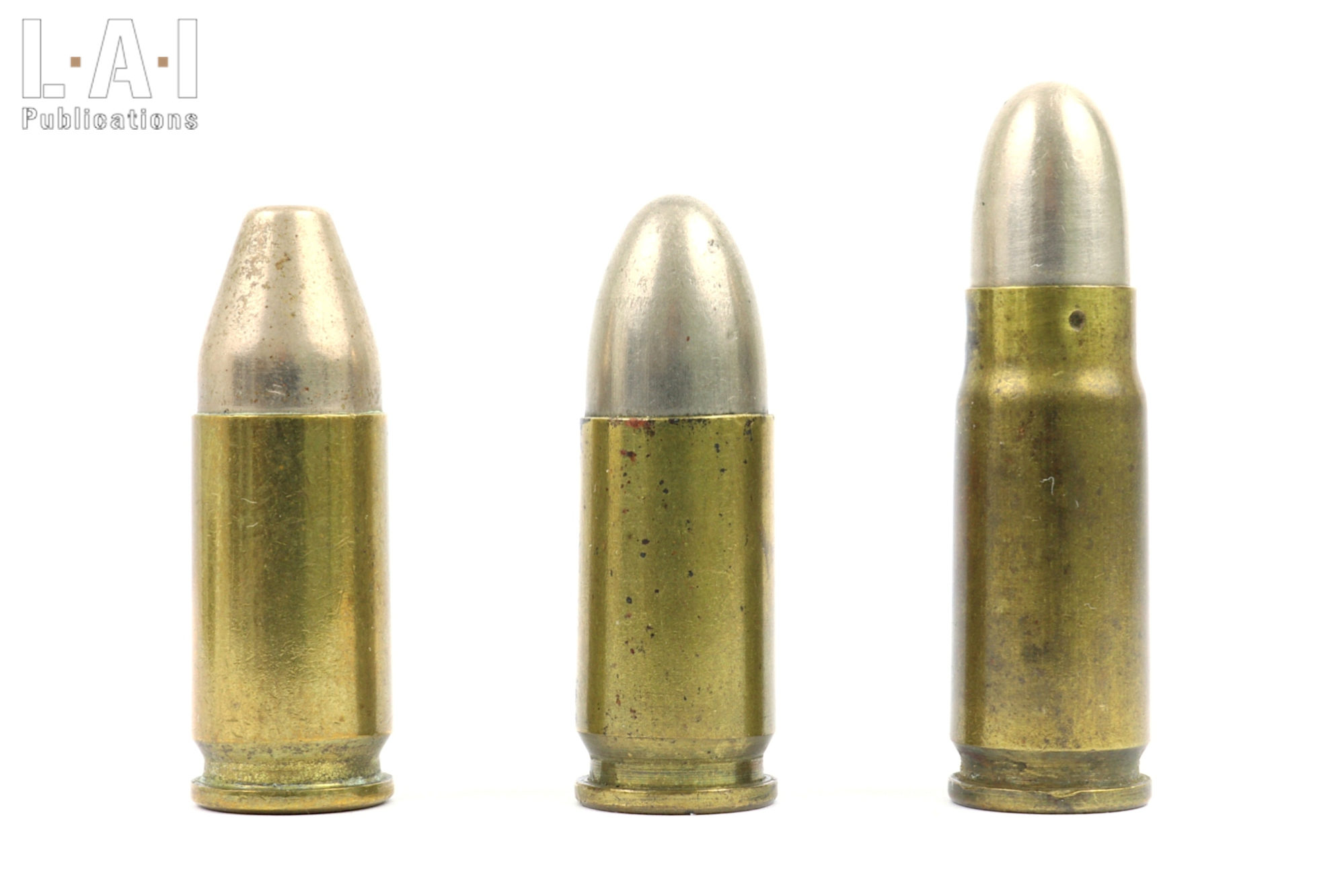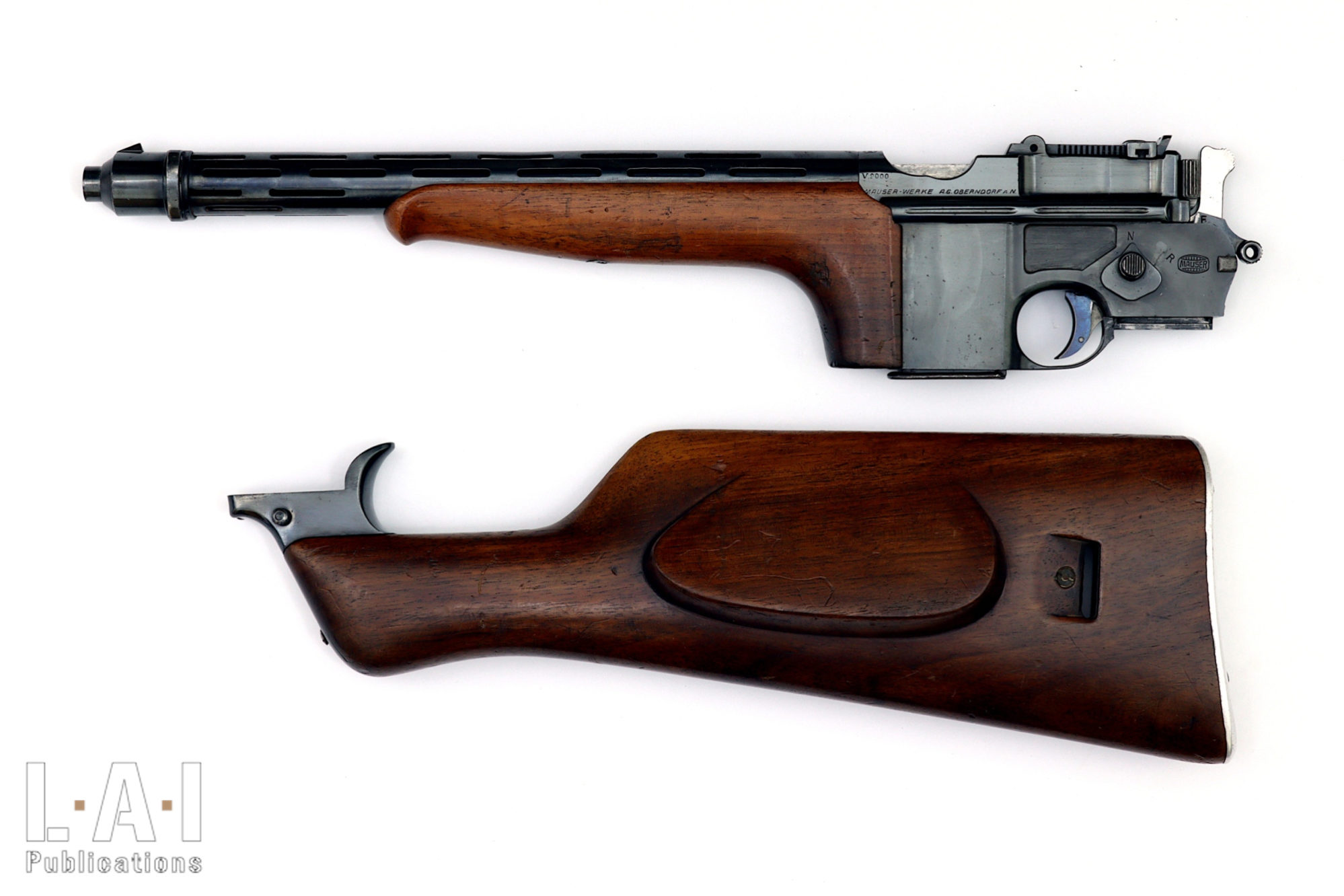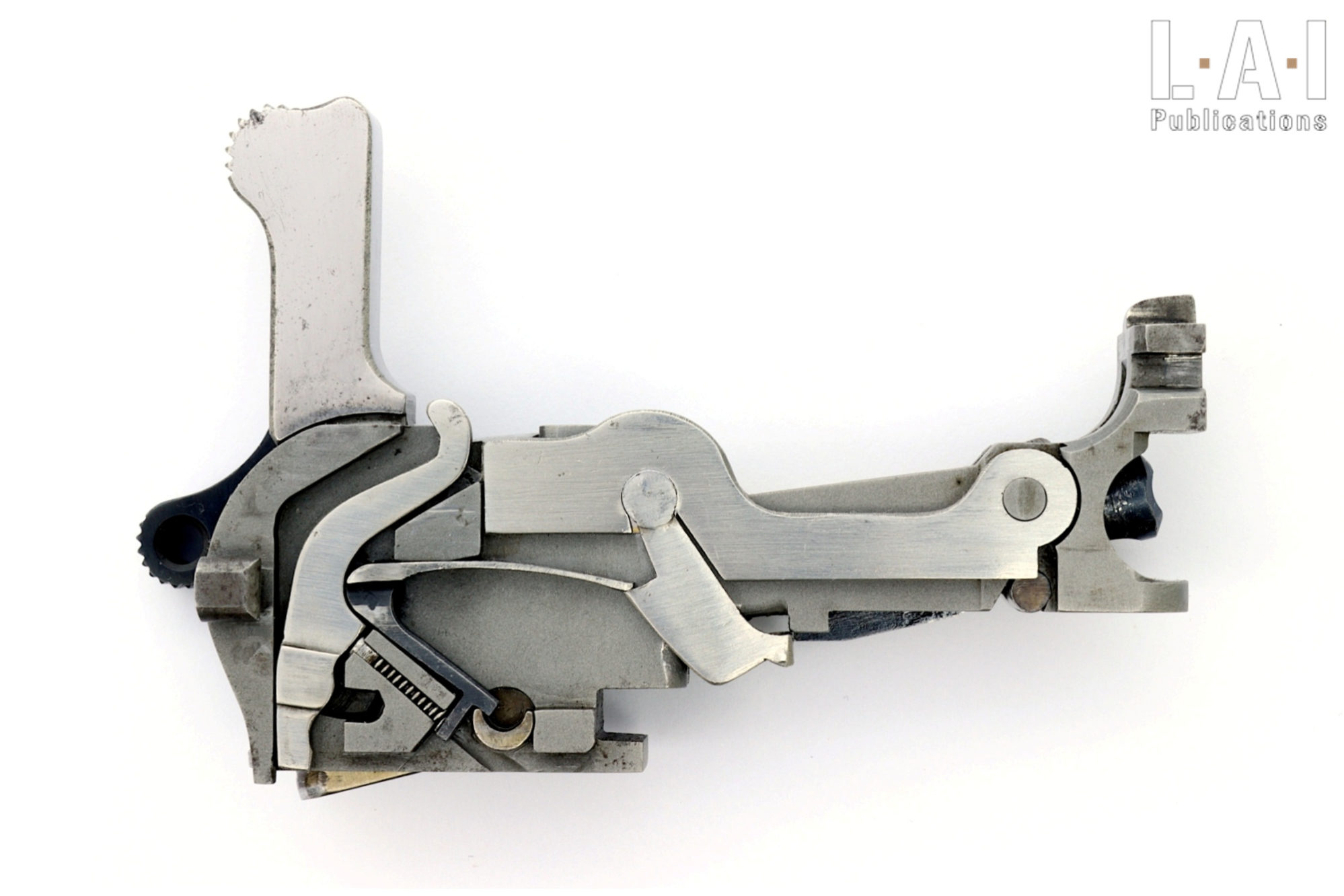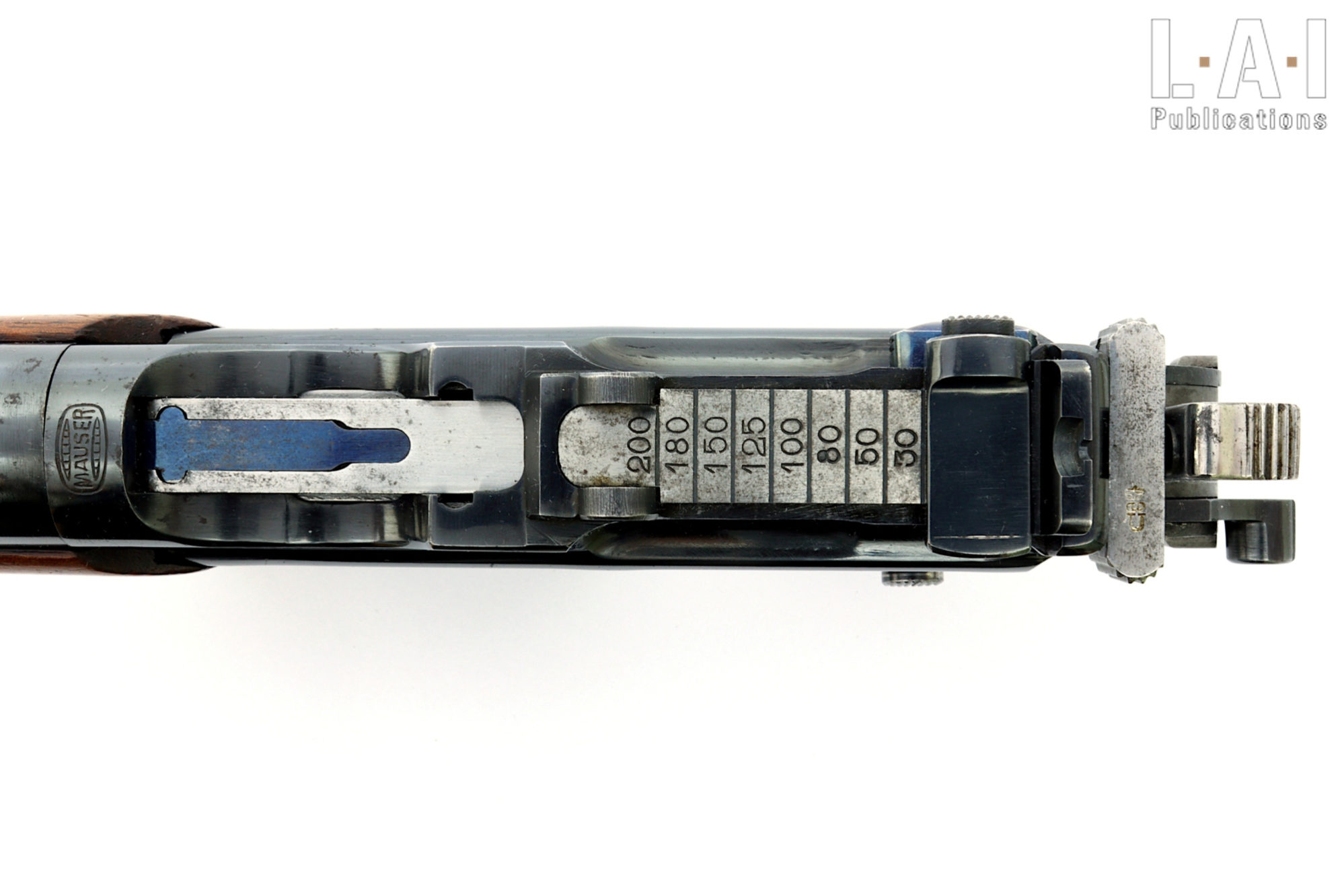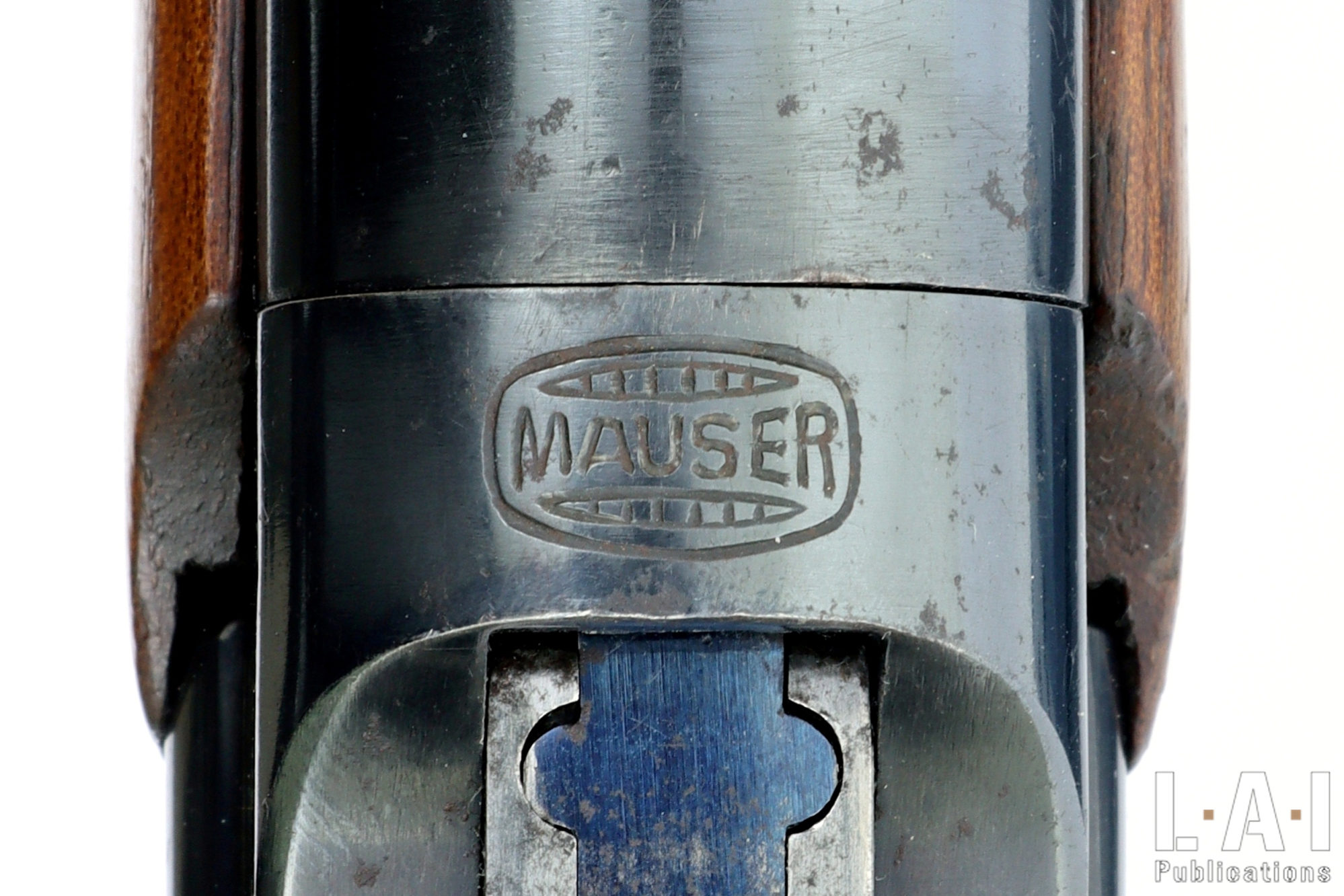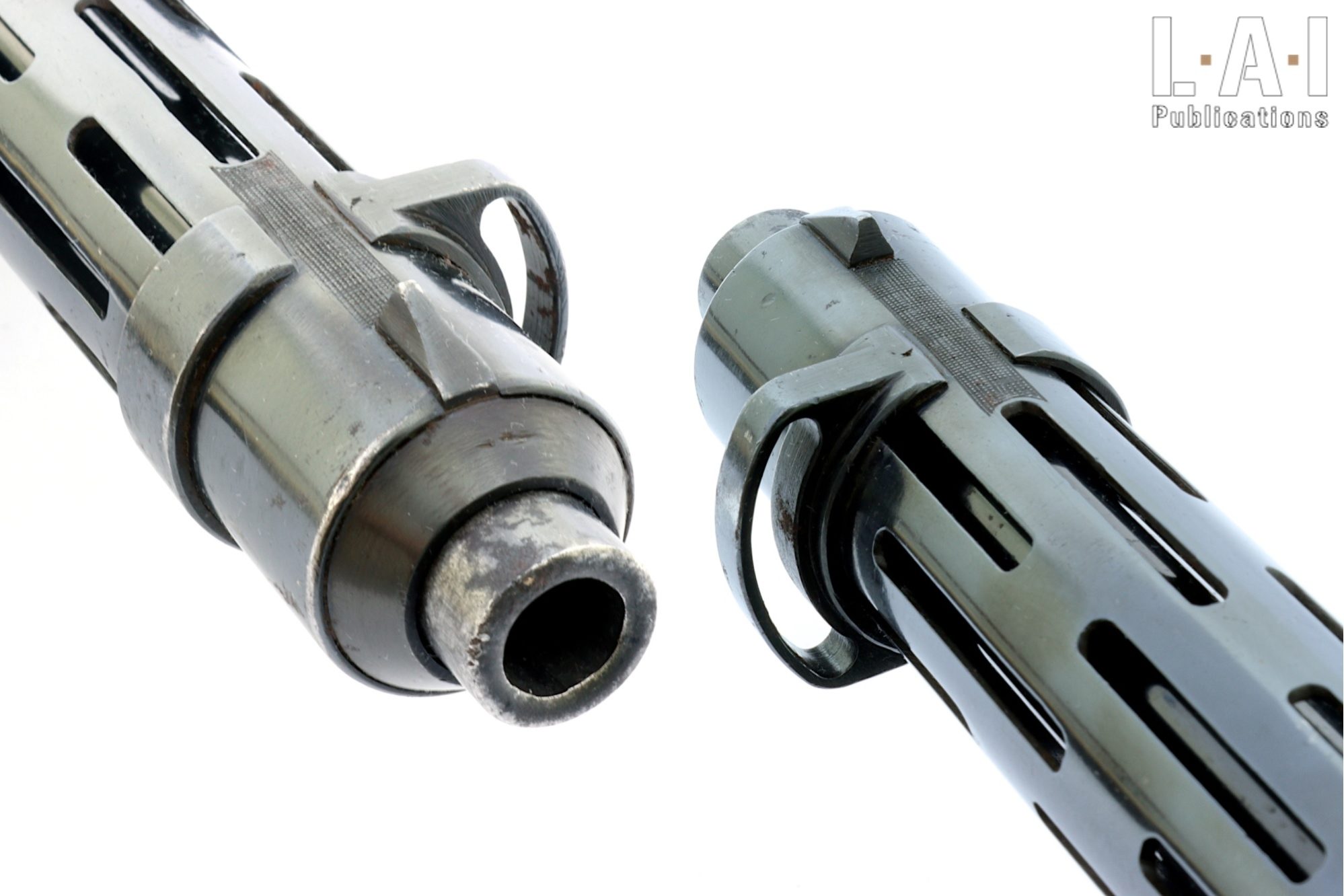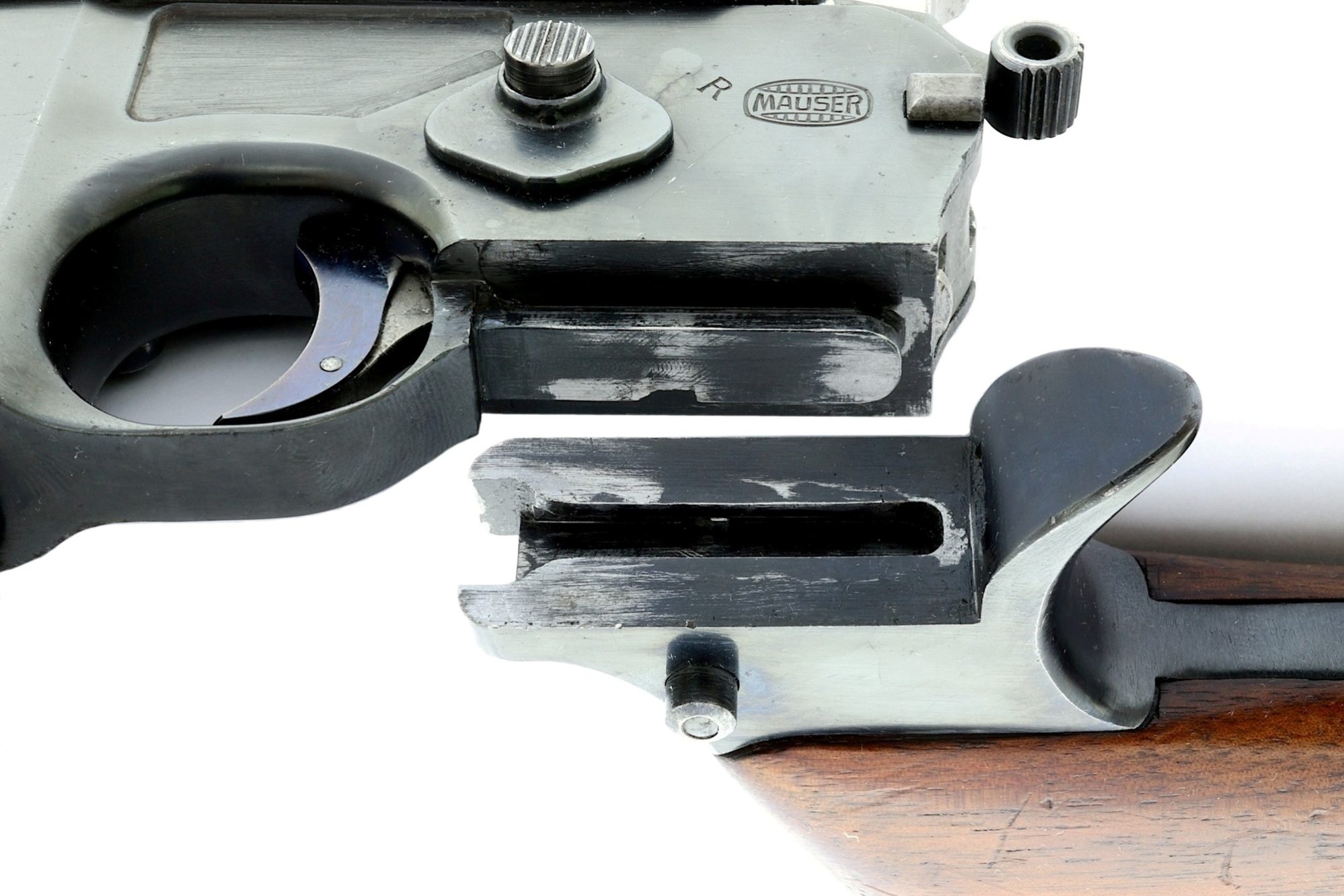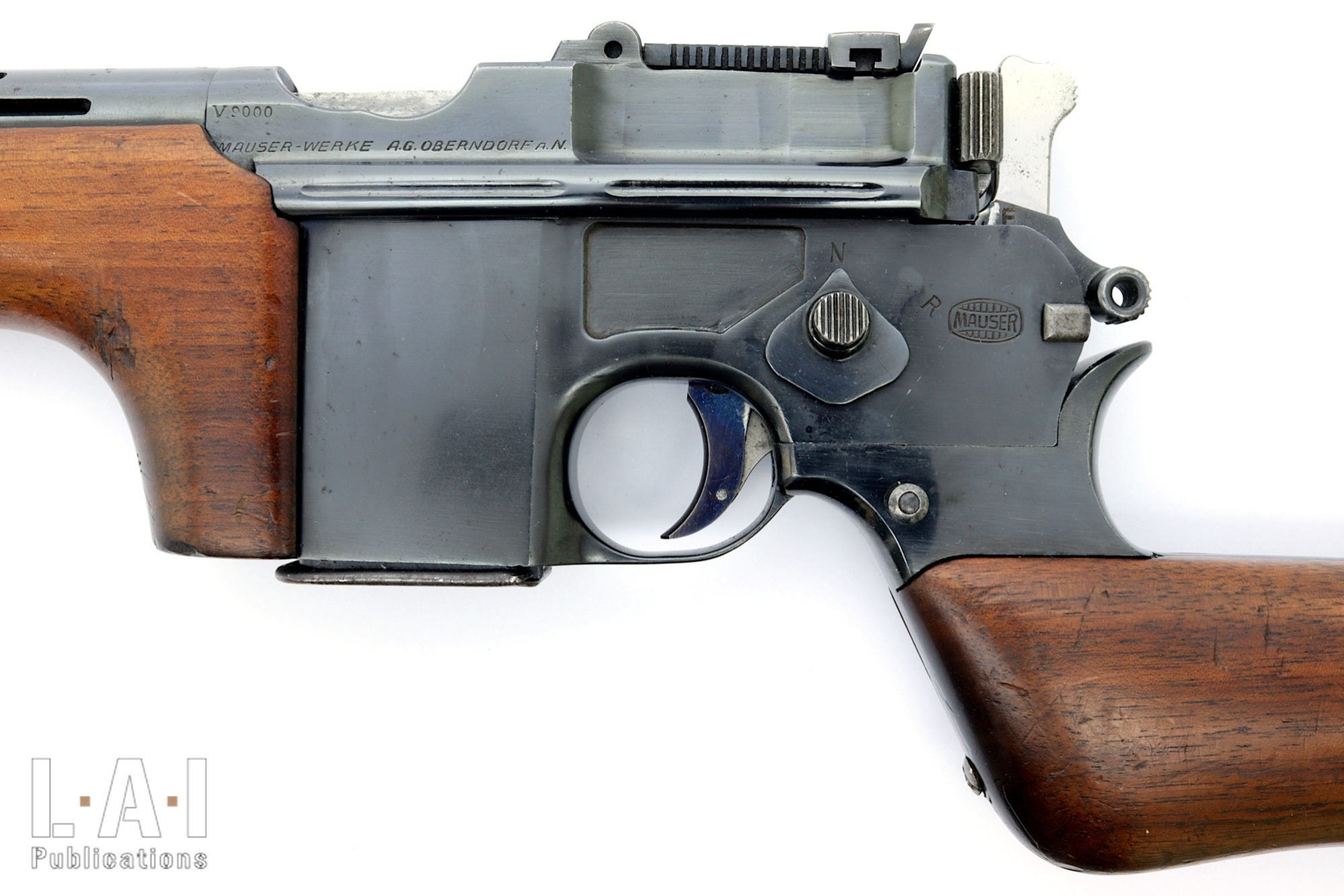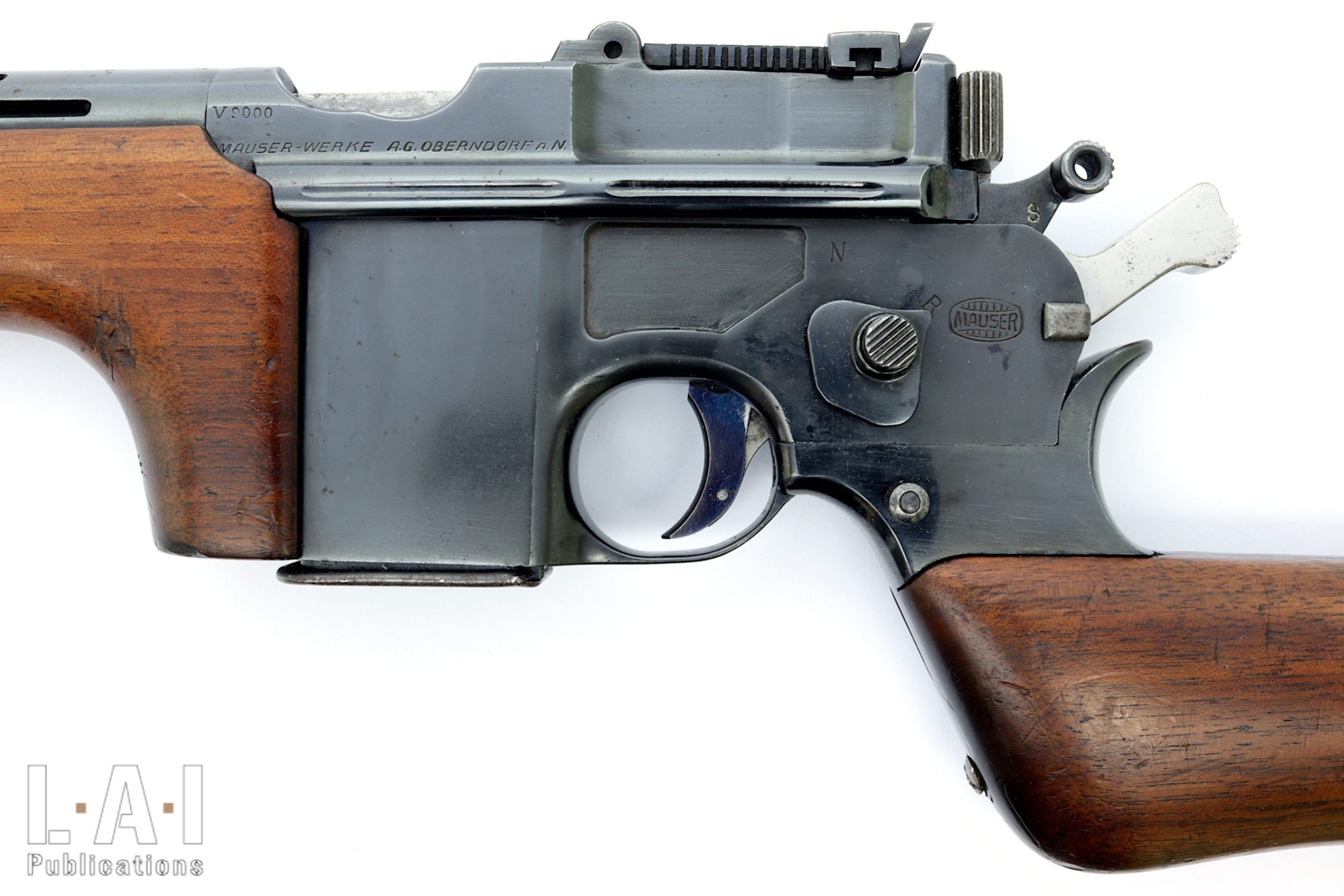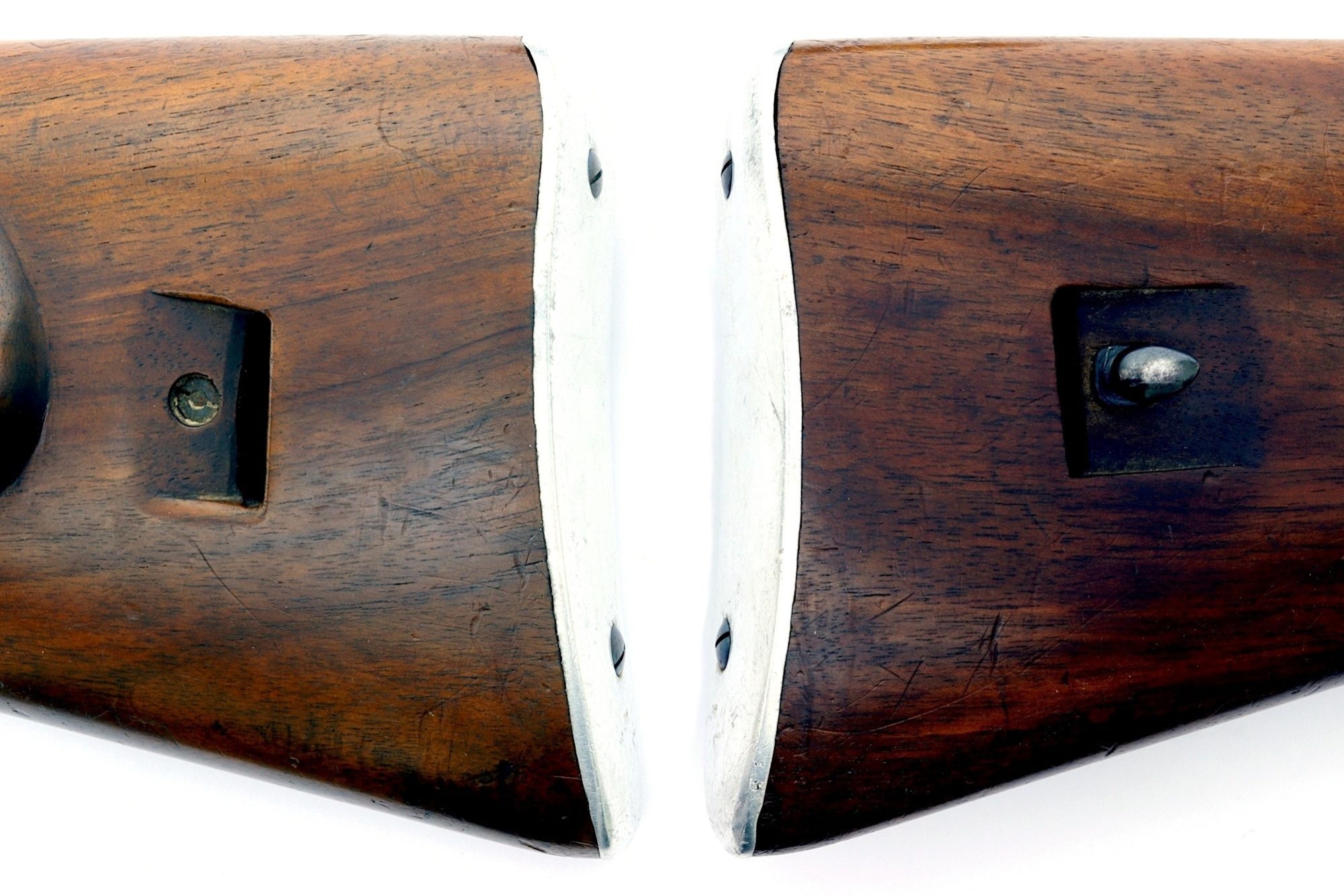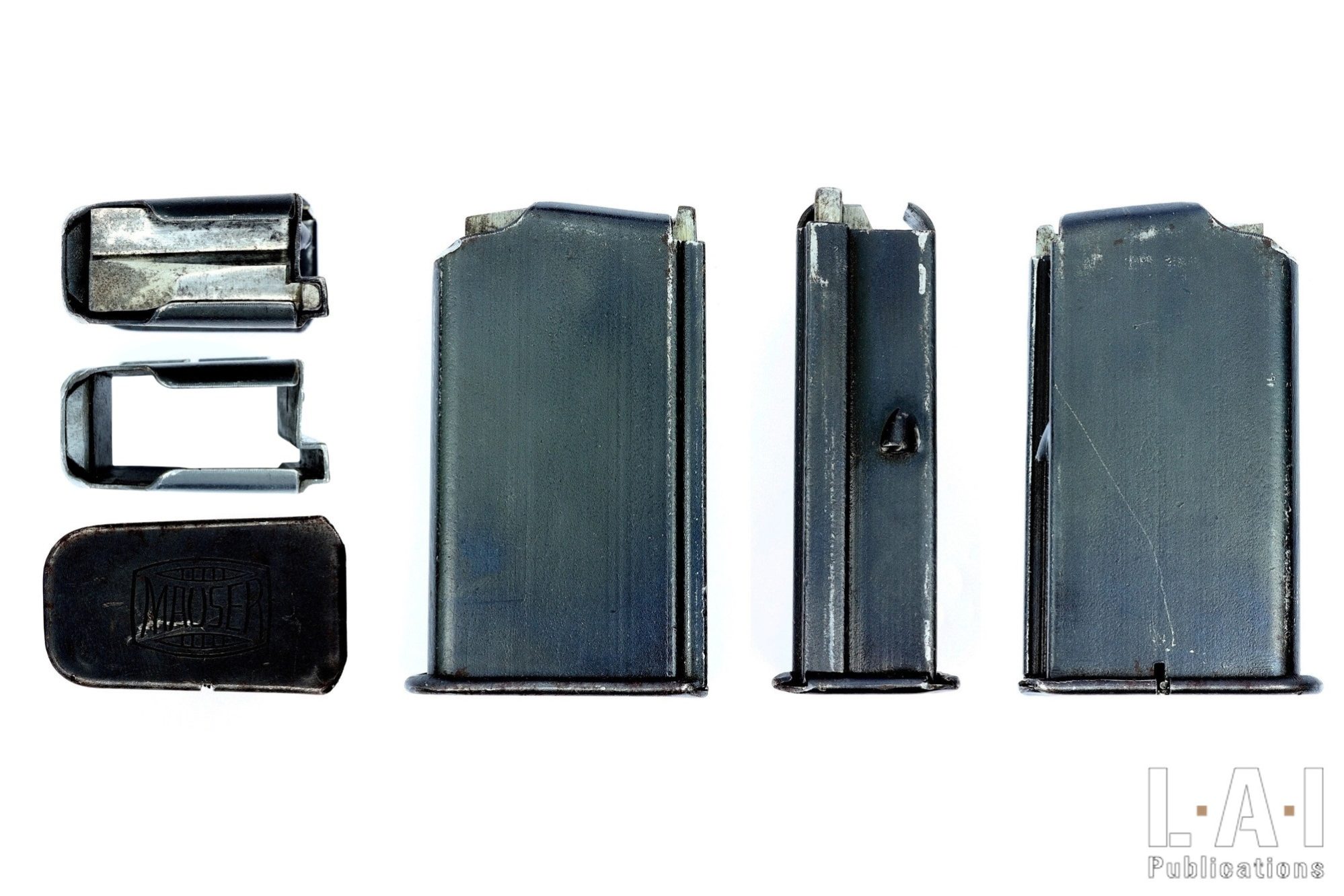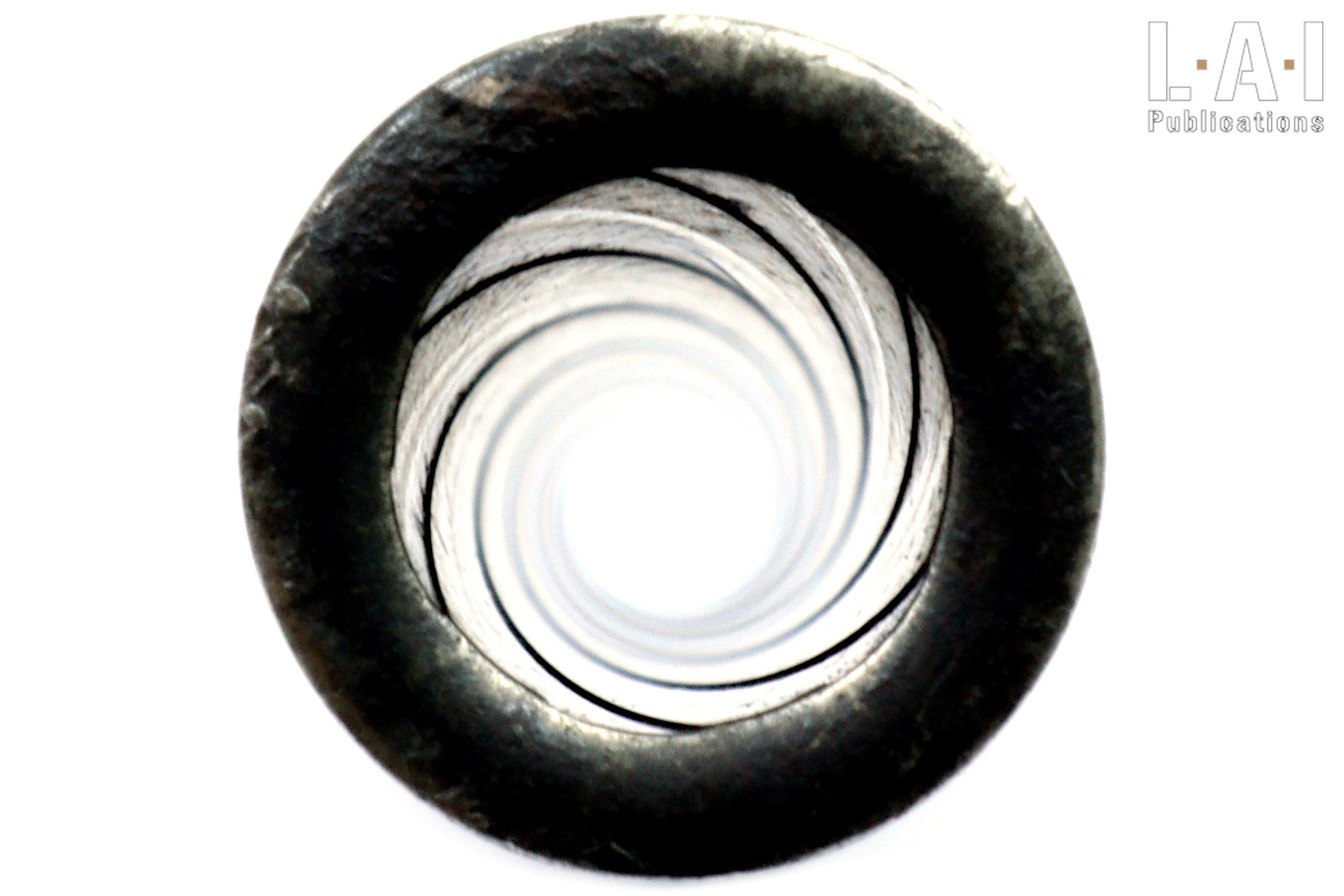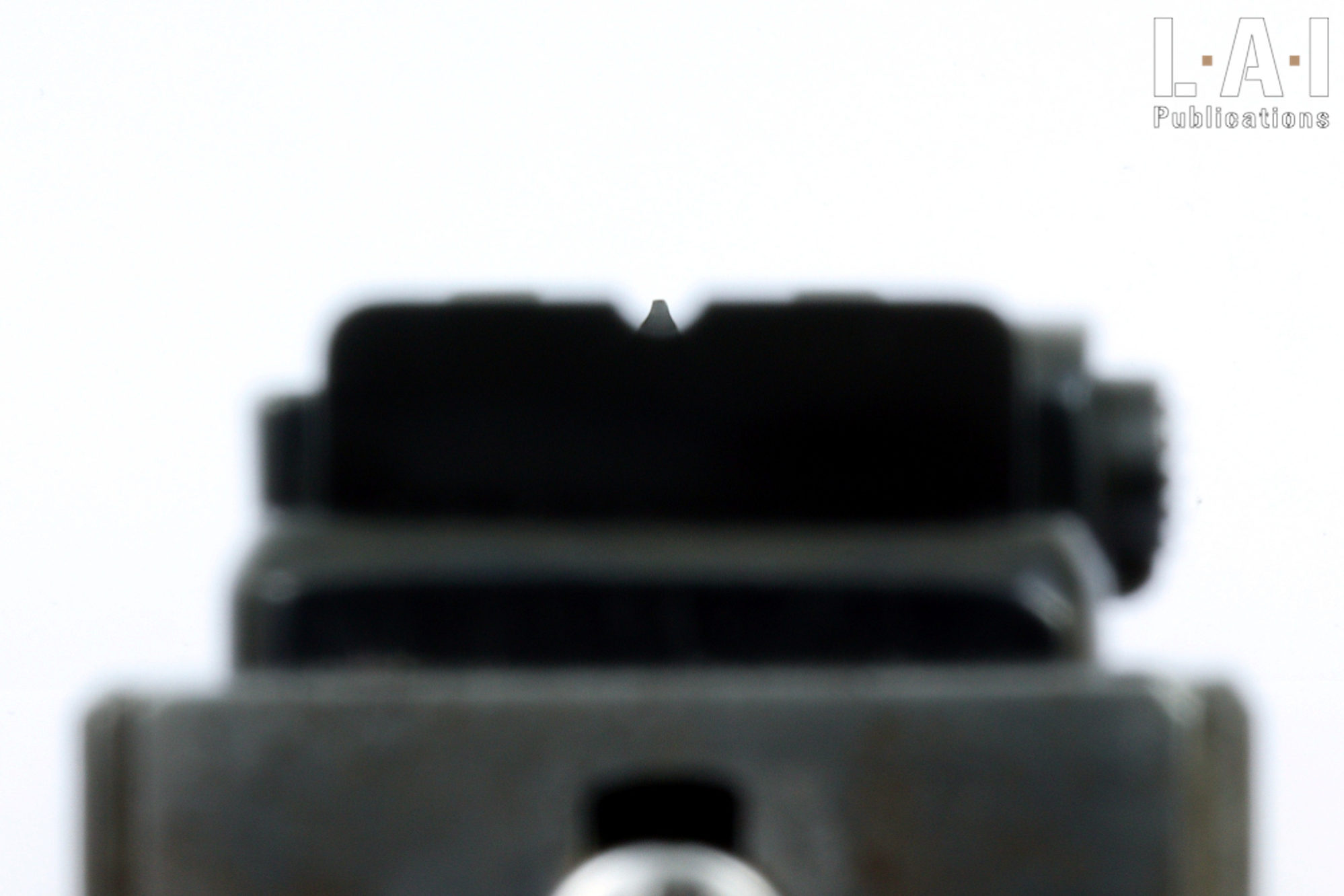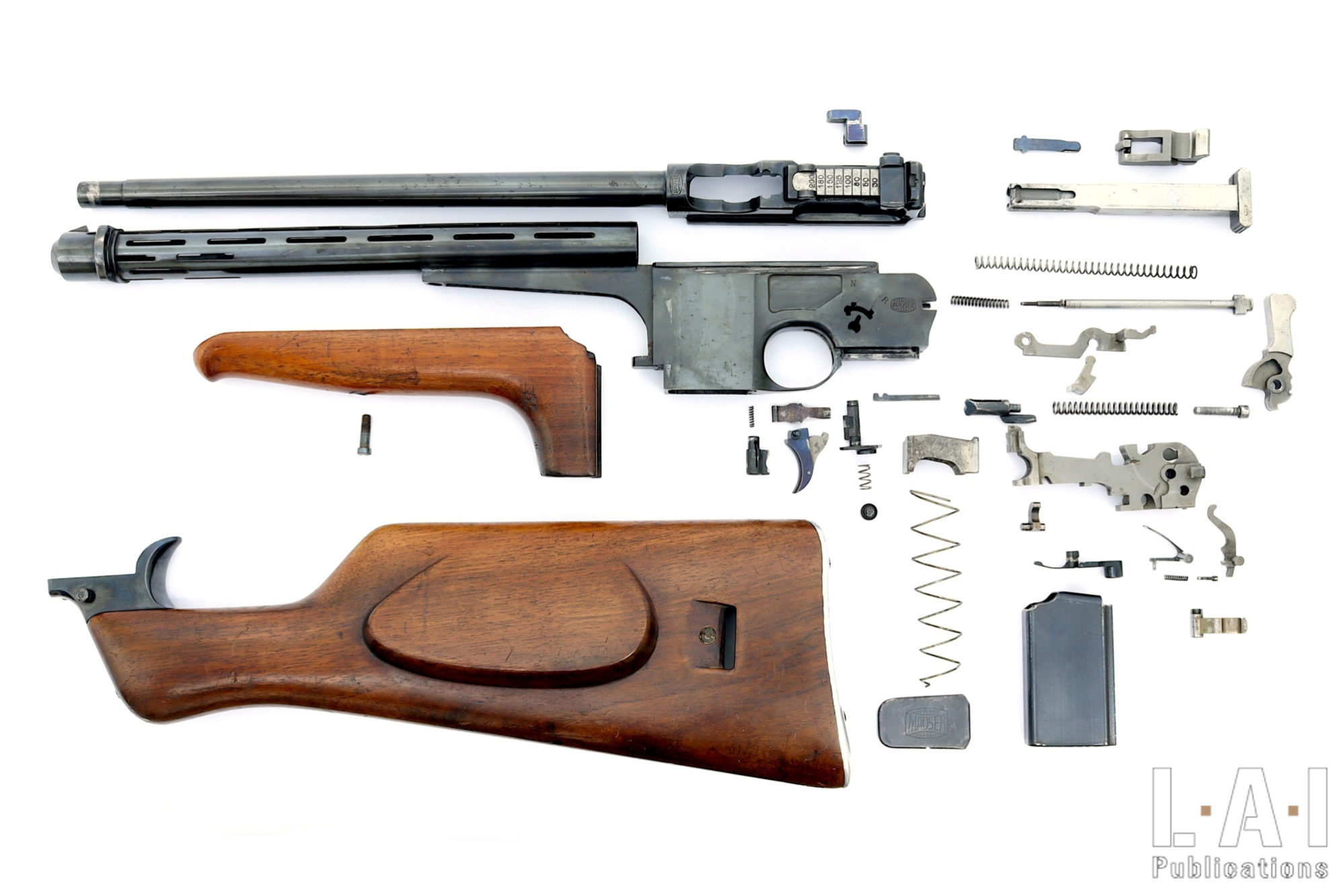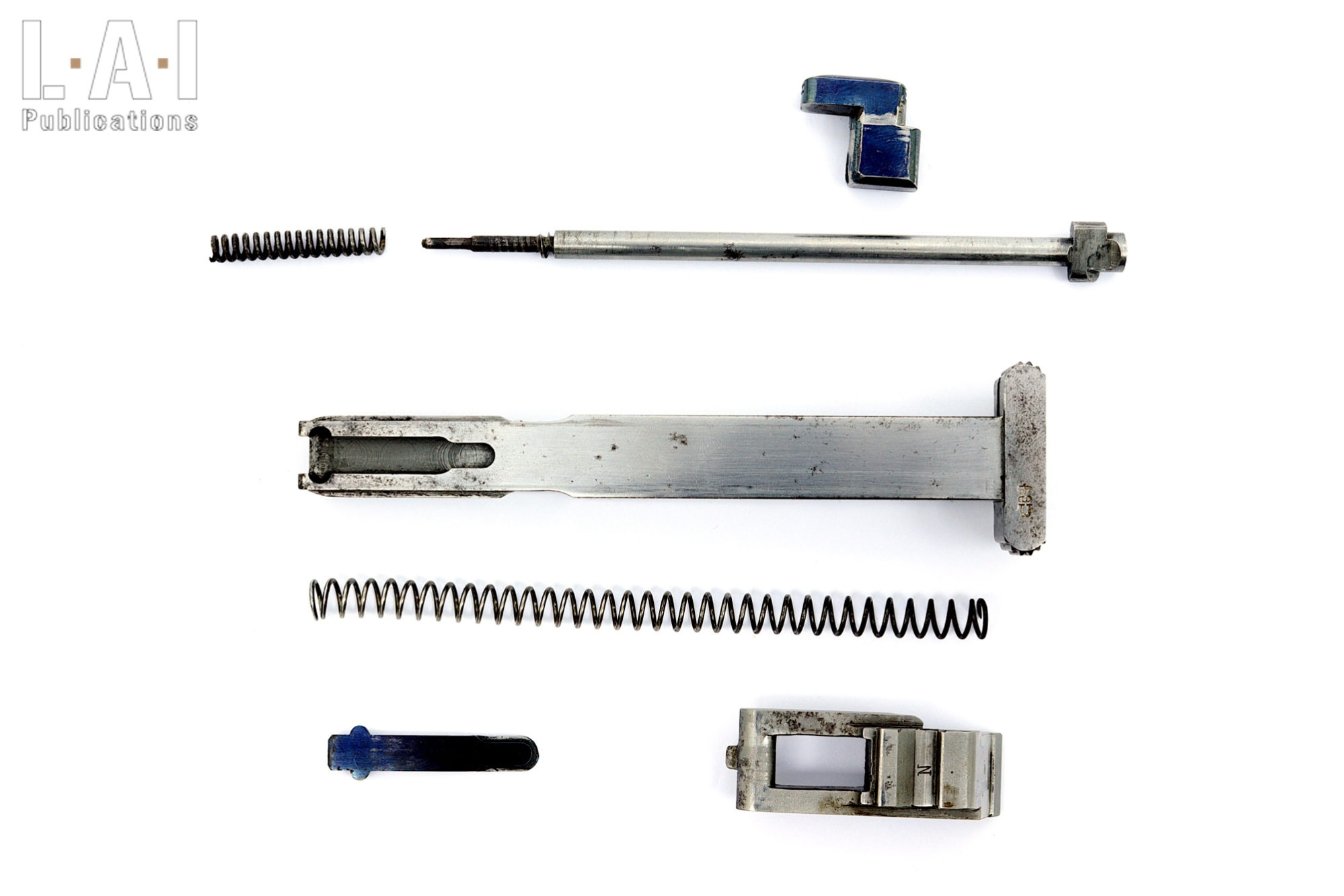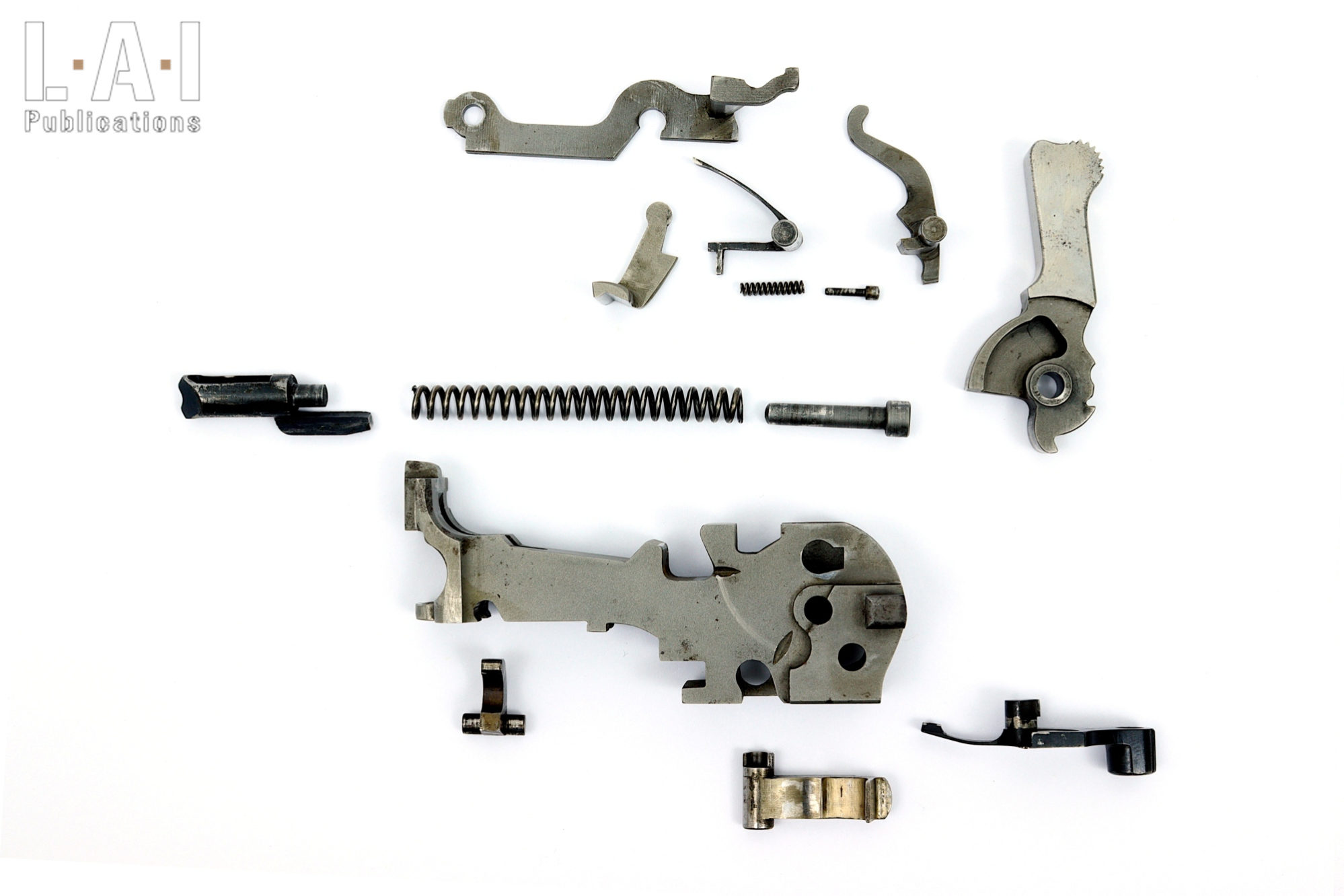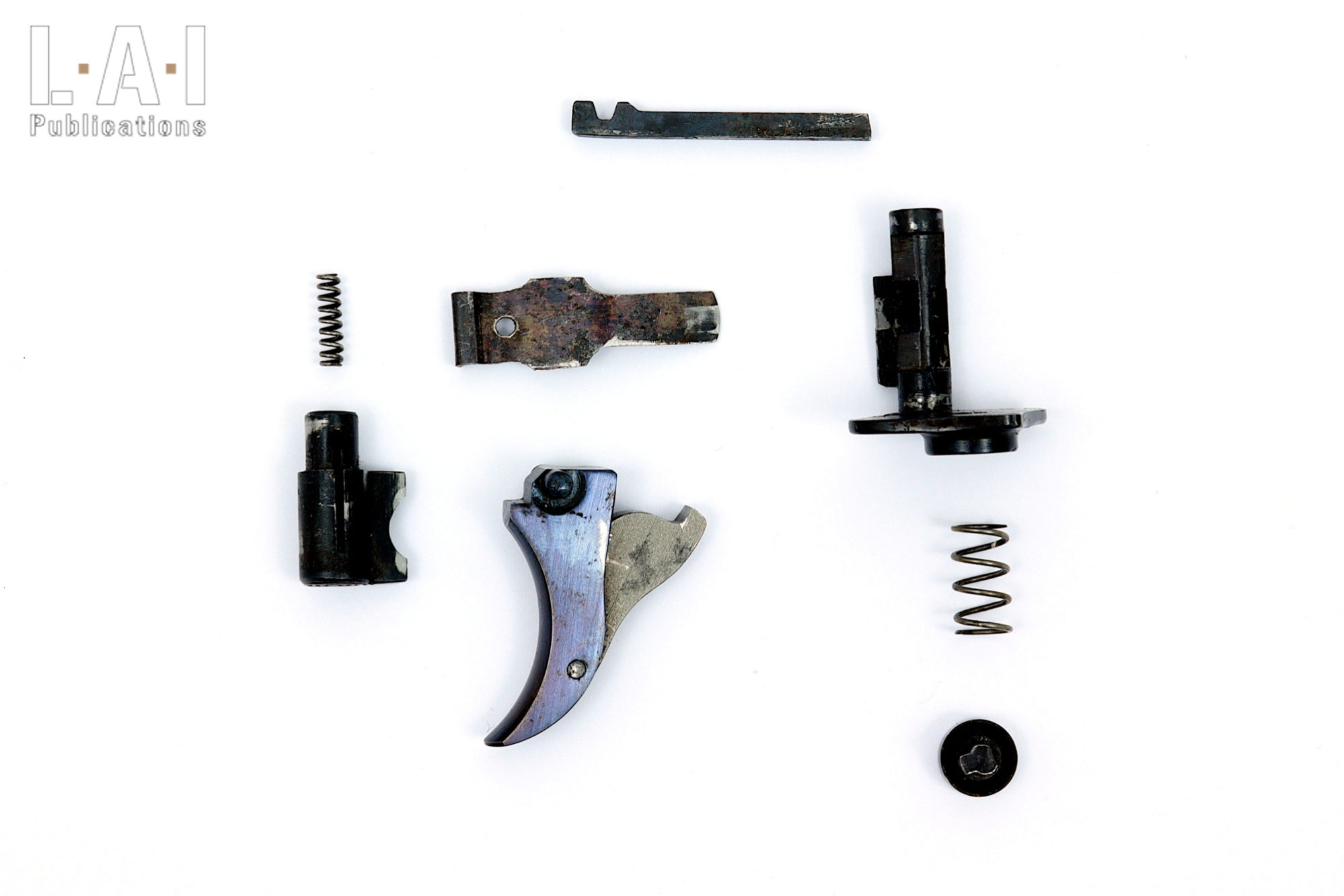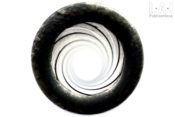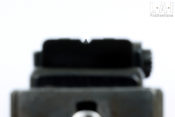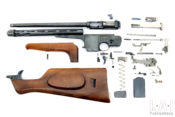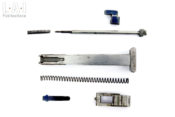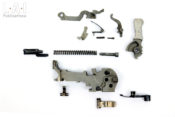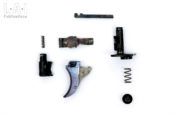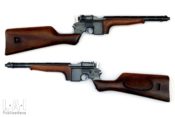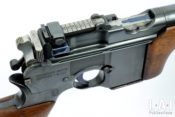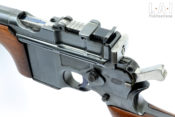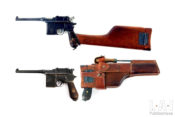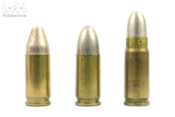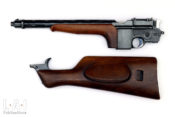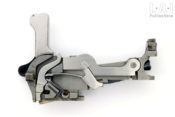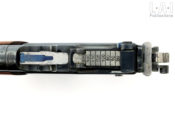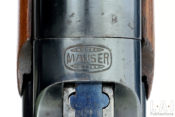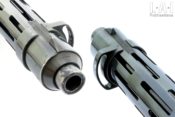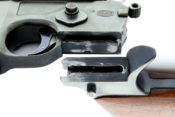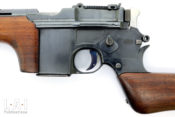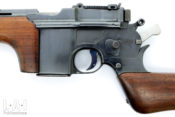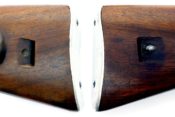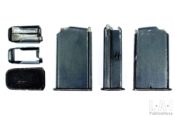The Mauser C96 Schnellfeur V9000 carbine prototype

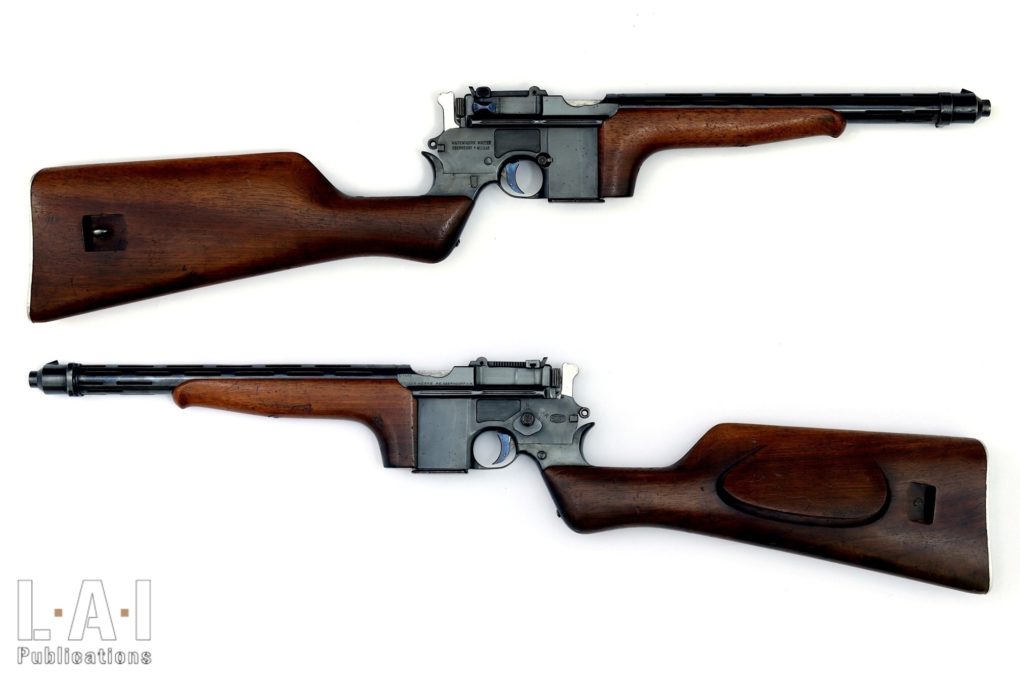
If the end of the 19th century had seen a real technological leap concerning small arms, the interwar period would also prove to be one of rich experimentation in many countries. Smokeless powder and the significant improvements in the means of production (metallurgy included!) brought by the second industrial revolution, already well domesticated, it was then necessary to apply the WWI feedback. In this context, it is not surprising that this automatic carbine – as strange as it is sublime – was born in Mauser factories.
Origin, destination, and authenticity
This carbine was probably born on the banks of the Neckar in the Mauser industrial complex in the 1930s. The exact context of its appearance and its history up to the present day are not known to us. Its serial number, V9000, tells us by its prefix “V” (for “VersuchsAbteilung” or “V-Abt”) that it is a weapon from the “experimental department” of the Mauser industrial complex, therefore a prototype. The use of this prefix is known for prototypes developed from the second half of the 1930s (starting – a priori – with the HSC pistol, then various weapons). We do not know what the “9000” refers to, but it seems that the established practice was to number the prototype series of each project with a beginning of thousands, then during the war, with a beginning of hundreds. Thus, the Mauser HSC prototype series starts at “V1000”. The choice of the number nine raises questions: it is perhaps a reference to the 9 mm caliber… or simply the chance of incrementation! It is likely that this weapon was brought back to France, like many other weapons from the Mauser Factories, during the takeover of the site by the French army by the end of WWII. This carbine is based on the mechanics of the C96 pistol developed for Mauser by brothers Fidel, Friedrich and Joseph Feederle (Pic.04). Without going back over the history of the C96 (this is not the subject of this article), it is more particularly derived from the “automatic” version of the weapon: the Model 712 “Schnellfeuer” developed by the engineer Karl Westinger (model that quickly supplanted the work Josef Nickl on this same theme). This version, proposed by Mauser from 1932, converted the weapon into a machine-pistol. It has a selector on the left side of the frame to select the firing mode, as well as a removable magazine.
It must be said that in the practice of burst shooting, the C96 has an asset right from the start: its shoulder stock. This will obviously make the exercise much more practicable and the results much more interesting from an operational point of view. However, the weapon does not have a handguard and the grip at the front of the weapon – on the magazine well for an M712 – is uneasy for burst control. We pay here in ergonomics what we gain in bulkiness (the weapon is always transported in its shoulder stock). For those who have experienced it (this is the case of your servant), burst shooting with the Schnellfeuer is difficult with its shoulder stock… and simply unusable without. We can mention here that this is perhaps what cost the life of French Foreign Minister Louis Barthou in Marseilles on October 9th, 1934. He was sitting in the car next to the King of Yugoslavia Alexander 1st when Vlado Chernozemski, a Bulgarian revolutionary, opened fire on the King from very close range with his Schnellfeuer. Firing several times, he hit the King, but also, the driver (named Foissac), some people in the crowd, and perhaps the minister. If an 8 mm 92 bullet was found in the car at the minister’s location during the 1935 investigation, some accounts of the attack still leave some doubt as to the origin of the weapon that produced the fatal injury(ies). In the end, 15 people will be killed or injured. Back to our M712, compared to several other machine-pistols that would follow the route traced by the Schnellfeuer, the Mauser weapon has a significant disadvantage: the power of the 7.63 mm Mauser becomes here a drawback compared to some softer ammunition: in addition to an increase in recoil, this will also increase the rate of fire of the weapon, another unfavorable point for the burst fire control (contrary to some belief… Those interested in the subject can read our thoughts on burst shooting).
This prototype therefore proposes to correct two of these aspects: it offers a practicable handguard while offering a more moderate caliber, but then already well established in the military landscape, the 9×19 mm (Pic.05). For the record, in the 1930s, the loads available in 7.63 mm Mauser were generally 10% more powerful (in terms of energy) than loads in 9×19 mm, which is considerable. This difference is felt in terms of recoil, any action leading to a reaction (in the fields of physics, but probably not in politics…). No doubt with the observation that the weapon thus created can no longer be a handgun carried in a shoulder-stock holster, it also abandons its pistol morphology to conform to the specificities of a carbine. It has a removable stock, whose attachment system is found on other Mauser carbines (Pic.06). In the same “carbine” spirit, its barrel is lengthened to 310 mm: enough to fully exploit the potential of the 9×19 mm. It is protected in its entirety by a perforated shroud whose purpose is to avoid direct contact between the shooter’s hand and the barrel when the latter is getting burning-hot by successive shots. This provision is obviously directly associated with the burst fire capability of the weapon. It would be found on many submachine guns of this period.
This summary presentation made, we can wonder about the destination of this weapon. In the context of the 1930s, if the submachine gun was already present in the gunsmith landscape, it was not necessarily the case in the armed forces. Its use became widespread in the late 1930s or even early 1940s. So, there is always room for a weapon that is more compact and maneuverable than a rifle or an infantry carbine, but more effective than a handgun, in both armies and police forces… and why not with civilians! However, it should be noted, that compared to another known Schnellfeuer carbine known as “hunting”, documented in the book W D. Weaver, J. Speed and W. Schmid “Mauser Pistolen” from Collector Grade editions, this one has resolutely military finery: a barrel protective shroud and a sling attachment on the side in a “Karabiner” style. The weapon therefore offers a light carbine, easily transportable, with a burst firing capacity rather rare on an individual weapon of that time. All on a well-tried basis: the C96. From our point of view, it is rational that this track has been considered… It is the opposite that would have seemed more surprising to us.
Another idea that comes to mind when handling the weapon is that we are facing a “prestige” weapon, unique, intended to be offered to a notable. If this idea is reinforced by a higher level of finish (external and internal), actually, the weapon does not have any particular sign of prestige: no precious materials, no engraving. In the end, it is even sober. So how to explain this trim level? Well, first of all, the commonly produced weapons that came out of the Mauser factories in Oberndorf am Neckar at this time were generally of a “higher” trim level. The examination of a 1934 “Standardmodell” rifle will convince anyone! Finally, as it is a prototype, it is perfectly normal that this one, manufactured in a semi-artisanal way, receives a superior finish. And for good reason: it would potentially be presented to the managers of the factory, probably to authorities, to important customers … So once again, we feel that this is rather logical.
Finally, it is natural to question here the authenticity of such a piece. Clearly, when the existence of this carbine was announced, our first reaction was skepticism. But the fact that the announcement of this “discovery” was carried by Gilles Sigro, a gunsmith particularly erudite and passionate about C96 reassured us. Finally, once the weapon in hand, the last questions personally disappeared: if it is the work of a forger, then we are facing the work of a genius who has spent a truly insane amount of work and resources to craft a weapon difficult to sell on the French market… but not elsewhere! It can be exported… To a border and mountainous country for example? What better way to wish for this relic than to end up in a country that does not destroy weapons? Returning to the authenticity of the weapon, if there is little doubt in our mind, we give here our opinion on the matter. It is motivated and documented by the detailed examination that follows, but of course, everyone is entitled to make their own opinion!
An exceptional piece
The weapon therefore has a trim level that would easily classify it in the “luxury weapon” category. At the mechanical level, it takes the “standards” of the Model 712 “Schnelfeuer”: operation by short recoil of the barrel and locking by a mobile lock, associated with a firing mechanism allowing single and burst fire. It includes notable specificities of which we will try to draw up a list here, as exhaustive as possible… but without the pretense to be so:
- This model of a hammer not pierced in one eye is known – to our knowledge – only on the so-called “hunting” “Schnellfeuer” carbine, documented in the book W D. Weaver, J. Speed and W. Schmid. (Pic.07).
- The rear sight – derived from the brand’s .22 LR rifles – is graduated from 30 to 200 m by 20, 25 or 30 m steps (Pic.08)! Yes, the steps are not regular. If the rear sight is thus graduated, obviously, the tangential curve machined on the receiver is also different from those of the C96 pistols, whose rear sights, originally for the 7.63 mm Mauser, are graduated from 50 to 1000 m by steps of 50 then 100 m. It should also be noted that those of other Mauser carbines that we have observed are graduated from 50 to 500 m by 50 m steps. Here too, the use of this 200 m rear sight is reported in the book by W D. Weaver, J. Speed and W. Schmid on the same “hunting” “Schnellfeuer” carbine.
- The upper front part of the receiver abandons the classic sides for a rounded profile that follows the shape of the barrel shroud (Pic.09). It is noted in this respect that the rounded thunder of this copy is of a diameter greater than that of an “ordinary” receiver with sides. Mr. Sigro, also pointed out to us that it is unlikely that a counterfeiter would have bothered to achieve a technical tour de force such as the remanufacture from raw material of a receiver / barrel assembly. Instead, he would have used a pistol receiver with sides as Chinese do with fake C96 carbines. If adding material, a posteriori is always achievable by a genius welder, the thing generally leaves traces (however tiny) and does not withstand an X-ray examination: but here, no traces. Once again, two other examples are listed in the book by W D. Weaver, J. Speed and W. Schmid: it is therefore once again a known variation, even if marginal. On this part is engraved the “Mauser” logo, probably by hand, in an execution similar to what is found on other prototypes of those years.
- The handguard support, fixed on the front part of the lower frame, takes the classic recipes of other C96 carbines, but it is therefore completed by a shroud perforated by linear slots along the entire length of the barrel. This shroud is welded on the handguard support. The upper part of this shroud, just behind the front sight, so in the sight axis, is checkered in order to avoid sunlight’s reflections (Pic.10). When firing, the barrel recoils freely in this shroud, guided by a ring machined in the front part of the shroud. The thing is clearly visible on the shooting video available below… Because yes, we shot this puppy! This shroud is, to our knowledge, totally specific to the weapon.
- If the stock fixation method, on a rail machined in the lower frame with the lock on the stock fitting, is not original, the stock fitting is: it has a wide return (Pic.11). The latter protects the shooter’s hand from the movements of the hammer and the pinching of the frame lock… so dreaded by fleshy hands like those of your servant. If the provision is well timed, for my part, it did not prevent the inconvenience related to the movement of the hammer … We will talk about this in the shooting section. This provision is, here too, to our knowledge, totally specific to the weapon.
- The fire selector has differences in its design compared to most late M712 selectors, especially in its lower shape which is not rounded (Pics.12 and 13). It should be noted, however, that it is already “simplified” compared to those carried out at the beginning of production.
- The butt plate is…of aluminum (Pic.14)! If the thing seems to us – personally – to be a lack of taste, we still have to agree that the use of this metal was at least avant-garde for that time. The usefulness of this choice? A weight gain, obviously, but also probably a desire to display this weapon as something resolutely “modern”. Finally, for “operational” use, aluminum remains stronger than the thin plastic butt plates found on other C96 carbines. By indulging here in some unreasonable thought because without real foundation, this detail and the overall characteristics of the weapon question us on a claim to be used as a weapon of survival by the “Luftwaffe“. Why this thought? By certain desires and some crazy commands of a very eccentric but all-powerful character at the head of the German Air Ministry: Herman Göring. But let’s return to a more rational field: technique.
- The weapon can be equipped with a sling on its left side, in a very military “Karabiner” spirit. For this purpose, the shroud has a ring on the left of its front part, and the stock of a slot through it and a fixing nail.
- The ten-shot magazine receives a wedge on its front part to compensate for the difference in length between the 7.63 mm Mauser and the 9×19 mm (Pic.15).
Most of the external parts, including the frame and the receiver (and therefore the barrel), are blued. Some parts are colored by controlled tempering after polishing: the trigger, the bolt stop and the extractor are “pigeon throat blue”, the frame lock, “straw yellow”. The majority of internal parts are left in white after a gray tempering. Like the firing mechanism housing, some have a polished finish on surfaces subject to friction. The pusher of the hammer spring is blued.
Personally, examining the weapon leads us to believe that it was probably manufactured between 1936 and 1939: its very nature, its finishes, and the type of serial number invites us to this conclusion.
Shooting
So, let’s say it immediately: we were not particularly ready to have a go with this exceptional piece. Regarding exceptional pieces, two philosophies are generally opposed:
- The one that puts the interest of such a piece first and keep it in the original condition without any risk of degradation … and therefore no firing, but also, no disassembly. If you are getting to know me, you will have understood that this second point is more problematic for me: how to analyze and understand a mechanism without disassembling it?
- The one that has it that, like a classic car, it is only of interest if it can be used. Obviously, with all the usual precautions.
We are not here to grant merit points: each point of view can be defended. Thanks to the second point of view, in the case of firearms, it can be added that unfortunately (for gun enthusiasts), increasingly restrictive legislation tends to destine certain weapons to destruction or, at best, to deactivation. So, being in a legal framework that allows this test, why not go for it? Especially if this experiment can, as is the case here, be relayed by a publication, thus benefiting as many people as possible from our personal experience.
To conclude this preamble (I’m a pain ain’t I?), and to give back to Caesar, what is Caesar’s, it is our friend Gilles Sigro who acted as justice of the peace: “Try it and make beautiful videos!” he told me! Who am I to thwart such a request?
So, we experimented shooting with this weapon, with a total of 150 shots fired both shot-by-shot and burst. The choice of ammunition fell on manufactured cartridges with 124 grs FMJ bullets and priming with lead styphnate. We specify the nature of the priming (non-corrosive, but not “non-toxic” such as “2-diazo-4,6-dinitrophenol” priming, known as “Diazole”), because we have seen during our career that so-called “non-toxic” diazole ammunitions can be destructive to weapons (for those interested in the subject, Chapter 4 of our book “Small Guide for Firearms“). No stoppage, but a trigger’s return a little weak on the first shots that forces us twice to completely remove the finger from the trigger to reset the mechanism in single mode. It was necessary to wake up the beast! Let’s be crystal clear here, the weapon had been previously inspected and then lubricated without disassembly, all this to avoid the repetition of disassembling operations: we always walk on eggshells with an exceptional piece … Note as well that the barrel also presents in this respect a state – about 90 years later – that is very correct with beautiful scratches and a little oxidation (Pic.16). Why disassembling after firing? Well, the thing is mandatory for a decent cleaning. The disassembling video was thus made after the shooting video… Behind the scenes of the article! In the rules of the art, the advanced disassembly of the weapon would have been desirable before firing… But on a weapon of this nature, we prioritized things differently: our choices, our commitments.
On single mode the weapon is obviously very comfortable. If the recoil is very low, our right hand was still hit by the movement of the hammer during the first shot, forcing us to slightly take off the butt. No doubt this inconvenience will only concern “fleshy” hands. The sight is – as usual on German weapons of that time – V-shaped. This form clearly does not have our favor… but we will do with it (Pic.17)! On the target, the results at 100 m are (shooting from the prone position on a rest, which can be seen at the end of the video) “reasonable”: the H + L is about 30 + 30 cm, the shot being a little low with the 100 m set, but perfectly centered in direction. There is no doubt that a better shooter and a greater practice of the weapon allow an improvement of this result … But make no mistake: this is not a match weapon, and this result is already compatible with operational use.
In bursts… 1600 rounds-per-minute measured with video editing software on the slow-motion sequence! And we carried out several checks (including the calculation and smoothing following the length of the burst) to ensure that we did not make any mistake. But no, this value is the right one! Suffice to say right away, with 10 shots fired in 0.38 seconds, you do not have time to react. If the recoil is – as already mentioned – very low, the very fast “jackhammer” effect tends to raise the shot, especially since the barrel is not in the axis of the stock, but well above. It is therefore necessary to position oneself well, to constrain the weapon beforehand … And Alea Jacta est. The sequence we broadcast is the third 10-round burst fired. The first two – also filmed, but not broadcasted – climb noticeably more, but without falling into ridicule. Why not broadcast them: here we evaluate the behavior of the weapon, not the skill of the shooter! Thus, it would have been unfair to broadcast footage unfavorable for the image of the weapon, which would be linked to a poor mastery of the shooter … and we can always do better! Let’s put forward here that these tests were made at a close distance in a shooting back-stop large enough to avoid any stray bullet! Our verdict: the burst is useless here and totally unusable in a practical way. But the technology demonstrator is doing its job here: it proves that we must not persevere in this path! (« Errare humanum est, sed perseverare diabolicum” as they say!) And as the weapon did not go beyond the prototype stage, this is probably the finding made in Germany at the time.
So how to explain this rate of fire? Here we can highlight 3 decisive factors:
- The rearmament impulse is long because of a long barrel.
- The bolt stroke of the C96 is particularly short.
- The bolt of the C96 is very light.
As a result, and without a rate reducer (and it seems that this path was also studied given some recently unveiled picture), there is no reason why the rate should not be very high… But still, 1600 rpm… It was unexpected. It is probably the fastest burst weapon we have had the opportunity to try. The only potentially faster weapon that we have experienced – always in a legal and professional context – is a Gevarm carbine in .22 LR modified in burst mode whose around twenty shots were particularly quickly delivered … But not having made a measurement at the time, it will remain a mystery! And so… exclusively LAI Publications: the video!
Disassembling
The disassembly has no noticeable difference from the M712 “Standard”. However, this specimen was particularly fitted and the removal of the firing mechanism from the frame required the assistance of a synthetic pusher. On the other C96s that we had the opportunity to disassemble, this part of the disassembly is done without tools. We do not go into the written details of the disassembling of this exceptional weapon … But we offer you the visualization of its video and pictures 18 to 21! Subscribe, click on the blue thumb, blah-blah-blah…
In conclusion
So, what can we say in conclusion in the face of such a historical testimony? Once is not customary, as Professor Henry Jones Junior would say: “That belongs in a museum”! Or at least in a careful collection that will ensure its conservation and transmission to future generations. For our part, we hope that this sharing would have been pleasant and instructive for all… as ever!
Arnaud Lamothe
This is free access work: the only way to support us is to share this content and subscribe. In addition to a full access to our production, subscription is a wonderful way to support our approach, from enthusiasts to enthusiasts!
Special thanks to Gilles Sigro, of the “Armurerie Saint-Étienne”, who put this exceptional carbine at our disposal for this article and who ensured its enlightened proofreading!
https://ateliersaintetienne31.fr/
Bibliography:
« Mauser Pistolen », by W Darin Weaver, Jon Speed and Walther Schmid, edition Collector Grade.


